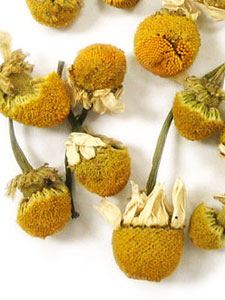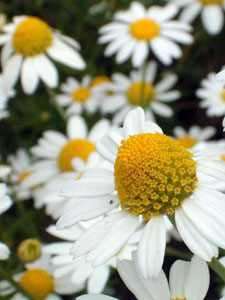A Brief Introduction to Chamomile


"..... Peter was not very well during the evening. His mother put him to bed, and made some chamomile tea and she gave a dose of it to Peter." - from The Tale of Peter Rabbit by Beatrix Potter
Virtually any flower, fruit or herb that can be ingested can become an herbal tea. Just take a trip to your local health food store and you'll find dozens of "medicinal infusions" boasting a variety of benefits from relaxation to rejuvenation. But let's be honest: when most folks reach for an herbal tea, they're probably going for Chamomile.
Chamomile is one of the most popular herbs in the world, available in a variety of forms. The most prominent (and, of course, my personal favorite) way this herb is enjoyed is as a tisane, or herbal tea. In this month's edition of Teamuse, we'll explore the many facets of this versatile herb, disinter some old stories and release some recent studies.
There are two main a types of Chamomile: Roman and German. Roman chamomile is native to Western Europe and North Africa, flowering in late spring or early July. German chamomile, which (not surprising to anyone who has ever been to Germany's Hofbrauhaus) was used to make beer, and is indigenous to western Asia.
For our purposes, though, we'll say that this famous plant finds its roots in Egypt. This is because the first recorded mention of Chamomile being chugged was in a document known as the Ebers Papyrus, dating back to 1550 BC. In Ancient Egypt, Chamomile was used to honor the gods, embalm the dead and cure the sick.
The Early Romans also enjoyed Chamomile as a beverage as well as an incense. Ironically, the name "Roman Chamomile" does not stem from this time. It rather comes from an arbitrary naming of the herb in the 19th Century by a botanist who happened to find some growing in the Roman Coliseum.
Chamomile has a distinctly applelike taste and aroma. In fact, the word "Chamomile" as we now know it comes from the ancient Greek kamai-melon, or "ground apple." The Spanish call Chamomile "Manzanilla"—or "little apple." A leisurely stroll through the famous Chamomile Lawn of Buckingham Palace is sure to provide this sensation.
There are many traditional remedies which employ Chamomile. These include everything from a cure for a cough or bronchitis, a fever, inflammation of the skin, liver and gallbladder complaints to appetite stimulator. One herbal medicine guide even claims that if you drink chamomile tea before bed, you won't have nightmares.
In the olden days, people called chamomile the "Plant's Physician," because they claimed that it was such a good companion plant. It's been said that if you plant chamomile near a drooping or sickly plant, in nine cases out of ten, the plant will recover.
However, current studies are reinforcing some of these dated claims. A recent report in the Journal of Agricultural and Food Chemistry confirms that chamomile is an effective anti-inflammatory, sedative and ulcer-fighter. Research also suggests that chamomile may act as an antioxidant and antimicrobial.
During the study, researchers tested 14 healthy volunteers who drank five cups of chamomile tea every day for two weeks. They found that drinking tea produced an increase in a substance that helps the body fight off colds.
Chamomile tea is not only a delicious, uncannily calming beverage (that is naturally caffeine-free), but it is also showing to have a comparable amount of health benefits to its cousin, green tea.
So it seems that practically whatever type of tea you drink, you'll benefit! The news just keeps getting better and better... Tea drinkers, rejoice!
